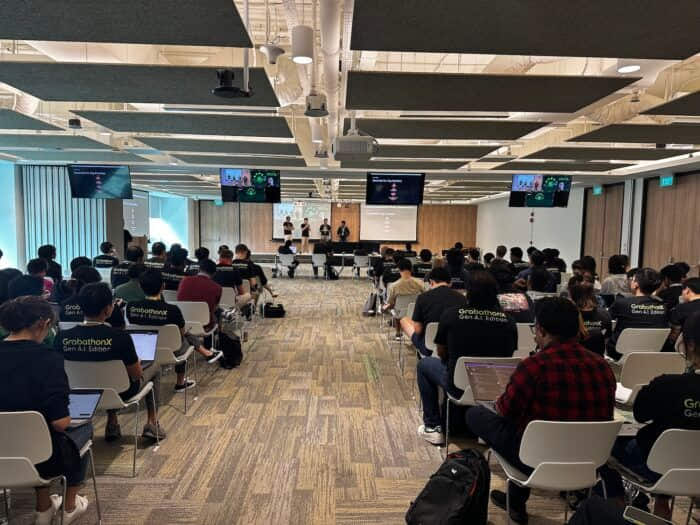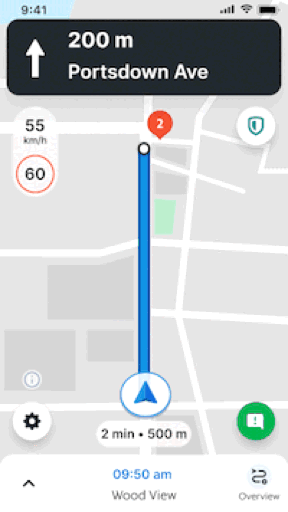How Grab’s tenth hackathon helped fast-track generative AI ideas from pilot to launch
Grab is one of the largest internet companies in Southeast Asia, with innovation in its DNA. The company hackathons—Grabathons—are a cherished practice celebrating this culture. They’re a recurring, 3-day event where any Grab employee can pitch a product idea, put together a prototype, and persuade judges to put it on the product roadmap.
Grabathon has become a cornerstone of innovation at Grab. Many of the platform’s key features have their roots in hackathon ideas. It’s also a chance for Grabbers to break out of their routine, experiment, and collaborate across the organisation.

GrabathonX, the tenth edition of the event, concluded last year. Its theme was generative AI (GAI)—undoubtedly a hot-button topic in the current business landscape.
GrabathonX: Experimenting with Generative AI
Each Grabathon features a theme in line with what’s important for Grab’s business right now.
During the Covid-19 crisis, for instance, Grabathon 8’s theme was remote work and productivity, explained Karmi Nguyen, a principal technical program manager at Grab, and part of the technology strategy division. He has helped organise the past three Grabathons. The entire event is driven by volunteers within Grab.
GrabathonX, meanwhile, encouraged employees to explore how Generative AI (GAI) technologies, such as Large Language Models (LLMs) could enhance the Grab experience.
(Watch: Grab leaders on their favourite features and building new products)
“We were realising the step change transformation this technology could bring for our end users,” said Isella Lim, senior technology strategy leader at Grab and an organiser of GrabathonX. “The hackathon was a good way to accelerate ideas people already had in mind.”
The focus on LLMs also empowered Grabbers without coding skills to join. Today’s no-code LLM tools enable users to build their own apps by using natural language. This meant a lower barrier to entry for non-tech Grabbers, resulting in a record 107 teams across 9 countries signing up. The number of teams was 3-4 times higher than at previous Grabathon events.
Even Grab CEO Anthony Tan signed up with a team. “AT was excited to hear the different teams’ ideas on GAI. He encouraged us to boldly reimagine how GAI can enhance our solutions and processes, so that we can bring greater value for our user and partners,” said Nguyen.
Ideas that make an impact
After the prototyping phase of the event, a panel of judges picks the winning ideas. Two criteria matter most. It should solve a real-world problem and deliver a positive impact to Grab’s end-users, driver- and merchant-partners. The solution should be viable, so that it can get into the hands of users as soon as possible.
GrabathonX’s winning solution was a Merchant Menu Assistant developed by a team which called itself Grabosaurus-rex-v2. Thousands of merchants join GrabFood each month—many of them small, one-person shops run by owners who may not be so digitally savvy. For these merchants, the task of uploading all menu items one-by-one can be quite laborious. Merchant Menu Assistant enables merchants to create menus automatically from a photo of their menu.


This solution is on track to production and has already been rolled out to internal merchant operation teams with over 10K menus uploaded to date.
Also in the pipeline for regional rollout is Last Mile Navigation, which harnesses LLMs to help drivers locate their pickup or drop off point more efficiently.

With LLM, we are now able to extract critical information from eater’s notes—allowing us to clearly display meeting point, building name, nearby landmark on an expanded pin in the driver’s navigation view.
From hackathon to production
“Something intentional we did this time is to make sure it doesn’t stop at ideas,” said Lim. A total of 17 features from GrabathonX are in the works, and will be progressively rolled out to users.
Many of Grab’s most useful features were developed during previous Grabathons. One example is the app’s surge pricing indicator, which tells users booking a ride whether fares are lower or higher than the normal range.
To fully enable the participants of GrabathonX to start building their prototypes, Grab provided a suite of tools, including the company’s in-house LLM operations (LLMOps) platform. This gave participants access to a host of LLMs and the ability to deploy their work in a sandbox environment. The team also worked round the clock alongside the participants during the hackathon to help them troubleshoot and bring their work as close to production as possible.
Some innovative inventions that originated from Grabathons are protected by patents, subject to their eligibility. Grab’s Patent Office works closely with Grabathon teams to identify patentable inventions from Grabathon projects. Currently, Grab holds the largest patent portfolio in Southeast Asia among its peers.
With a record number of teams participating and the highest number of ideas that made the leap from hackathon to production, Grabathons continue to help Grab stay on top of the latest technology, and drive innovation that focuses on solving real world problems.
3 Media Close,
Singapore 138498